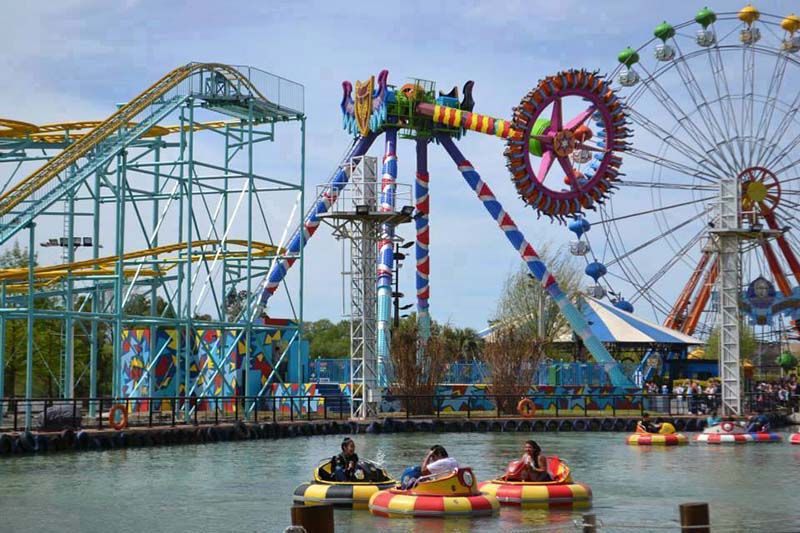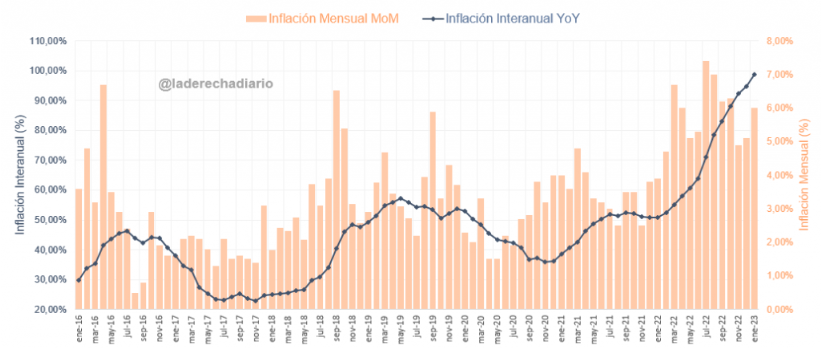The Argentine economy is going through the most difficult stagflation situation since the 1980s.
While prices soar, economic activity has sharply declined since August last year.
INDEC confirmed that retail prices increased to 6% in January, comfortably exceeding the 4% target stipulated by Sergio Massa and the “Fair Prices” program launched in November last year.

Neither price controls nor the delay in the pace of official devaluation could contain the inflationary stampede.
This is the most important increase recorded since October last year and marks the beginning of the end of Massa’s economic program.
The item that registered the highest increase was recreation and culture, with a jump to 9% compared to December last year.
It was followed by housing, water, electricity, gas, and fuels (8%), telecommunications (8%), alcoholic beverages and tobacco (7.3%), food and non-alcoholic beverages (6.8%), and restaurants and hotels (6.2%).
All these items rose above the overall CPI average.

The price of goods increased by an average of 5.4%, while services rose by 7.7% in January.
The category of goods and services with a “seasonal” nature marked a 7.9% rise, the core CPI (excluding energy and food) increased by 5.4%, and the price of regulated goods and services rose by an average of 7.1% in the month.
Year-on-year inflation climbed to 98.8% in the 12-month cumulative for January 2023, the most violent result observed since October 1991.
The year-on-year increase seems simply unstoppable.
It jumped 27.8 percentage points since Sergio Massa took over the Economy portfolio.
Likewise, in Alberto Fernández’s administration, the inflation rate practically doubled, from 53.8% in December 2019 to 98.8% in January.
Argentina consolidates its position in the world ranking of countries with the highest year-on-year inflation rate.
The drastic price increase comes at the same time that economic activity shows signs of recession.
INDEC’s EMAE index fell 0.2% in September last year, 0.5% in October, and even 0.7% in November.
If this trend persists for three more months (and everything indicates it will do so), the Argentine economy will formally enter a recession.
Early activity indicators, such as the industrial IPI and the ISAC for construction, showed sharp declines in December.
The industry collapsed by 1.2%, and construction fell by up to 3.5%, anticipating almost as a fact that general activity would also close the year 2022 with a strong retraction.
Far from a situation of productive bonanza, the recessive trend seems unavoidable and is becoming more and more evident.
The official probability of technical recession already amounts to 80%, according to estimates by Torcuato Di Tella University.
With information from Derecha Diario

